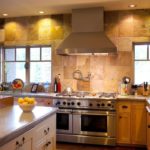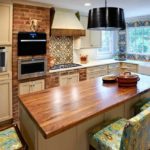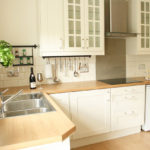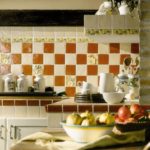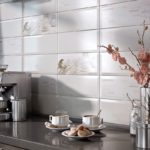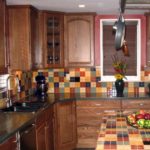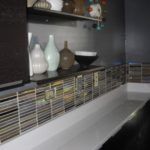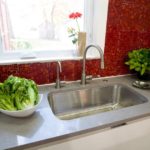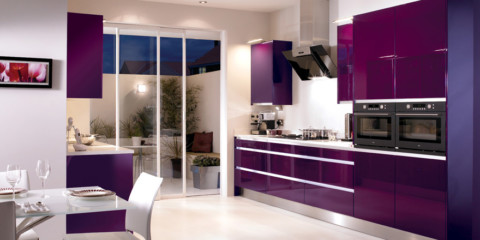 Kitchen
What could be the design of a white kitchen in the interior
Kitchen
What could be the design of a white kitchen in the interior
Repairs The kitchen always takes a lot of time and effort. This is an important area, and it requires detailed study. Here you need to take care of functionality, while not forgetting the charms of modern design. The design of the kitchen apron is of particular importance, and therefore worthy of great attention.

The kitchen is one of the few places in the house where we spend most of our time.
What is it?
Content
Each room can be divided into functional zones. This is especially true of the kitchen. So, we can distinguish two large categories - dining and working. Today, the second has come into our view. It contains a kitchen, equipment - in general, the territory and equipment that is used for cooking.
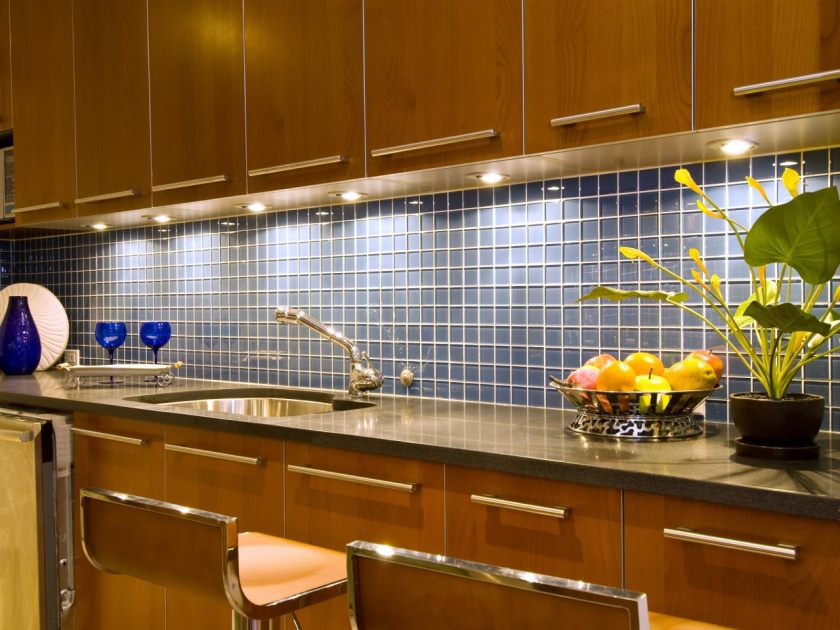
Cooking and eating, communication with loved ones takes place here.
The kitchen apron in the interior of this room belongs to the work area. It represents the area of the wall above the desktop. Why an apron? Apparently, because he performs the same functions as protective clothing with the same name. It takes on most of the pollution found in the kitchen. Therefore, it must possess the following qualities.

Every housewife wants her workspace to be properly planned.
- Strength. Resistance to moisture and high temperatures for this zone is especially important. Also, it must be resistant to mechanical damage, that is, be durable.
- Possibility of simple cleaning. Since the wall in this part of the room will often become dirty, the material for its cladding should easily be brought into a clean state. It is better to select smooth surfaces in which particles of dirt do not eat.
- Non-marking colors. You can choose a bright design, but it is advisable to avoid bright colors that quickly become contaminated.

An integral part of any kitchen is an apron that protects the wall from grease and soot.
So, we found out what a kitchen apron is and what its functions and characteristics are. It is believed that tiles are best suited as cladding for this area. It can often be found in modern interiors. Therefore, she attracted our attention, and became the subject of today's conversation. Now about the shortcomings.

An important component of modern kitchen is an apron.
Advantages and disadvantages
Tile is the most common method of lining kitchen surfaces. No wonder she deserved such popularity, because it has many positive aspects.

It is located in the working space between the wall cabinets and the surface of the worktop.
- Cheapness. Compared with other materials, there is the most optimal ratio of price and quality.
- Practicality. She tolerates abrasive cleaning, quickly and easily cleaned.
- Durability. It tolerates elevated kitchen temperatures and gets along well with moisture.
- Big choice. This species has long existed in the construction market, and has a large assortment.
- Ease of handling. Facing with such a method the surface will not be difficult, you can do it yourself, without resorting to the help of a master.
- Ease of care. To clean this surface, there are various cleaning products with which the care of the kitchen apron becomes extremely simple.

The classic design of this area is tile.
We see a long track record, but some of the shortcomings are also written in it.
- Non-environmental friendliness. Compared to wood, granite or stone, this material is not environmentally friendly, it is unnatural, therefore it is not applicable for some styles. But this indicator is relative: in comparison with plastic or chipboard, the proposed ceramics are much safer.
- The tile is laid in such a way that between its component parts (squares) there are seams in which dirt is clogged, which makes them darker and spoil the external image. But this problem is easily solved.

Use a smooth, high-quality grout, and a beautiful appearance will remain for a long time.
As you can see, the existing flaws are easy to remove or get around. Not for nothing because it has popularity. Having learned about the features, advantages and disadvantages of such a facing, we definitely settled on this option. You can safely go to the store and purchase goods.

Tiles have several advantages over other materials.
How to choose the right
But before you go shopping you need to learn the rules of choice. So, we advise you to pay special attention to the following points.
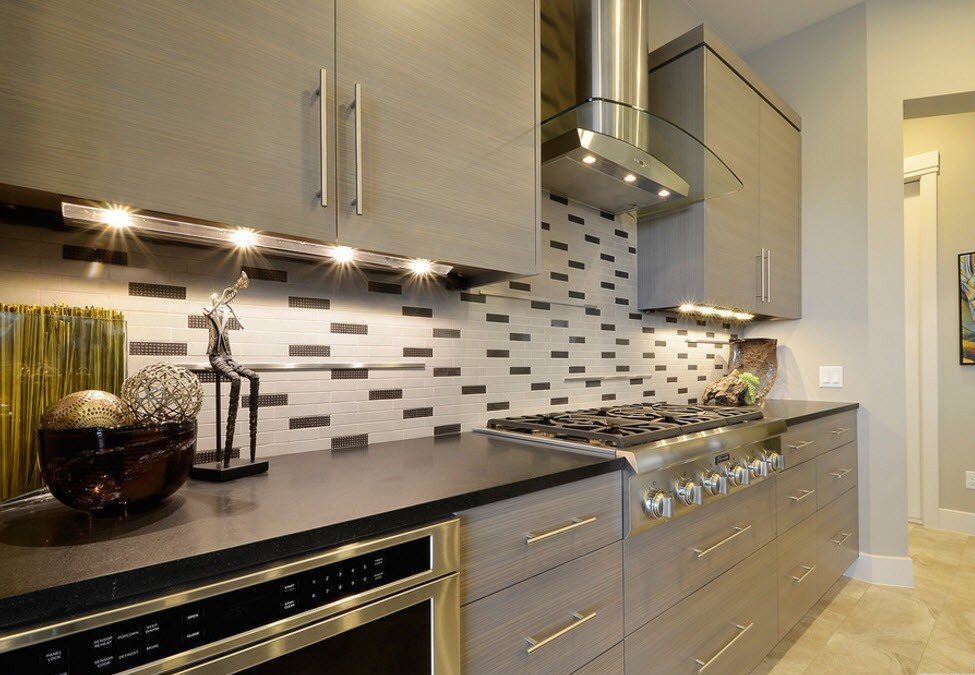
Tile is a very practical and durable material.
- Manufacturer: often this criterion is an indicator of quality.
- Quality: trust, but check, try to consider the product as much as possible and visually determine its quality.
- Condition: sometimes during transportation the goods may be damaged, or is already in such a condition on the shelves of the store, inspect it for chips and scratches.
- Size: pre-determine the size, and find the right one.
- Coloring: it should match kitchen furniture and other surfaces, so think about this factor in advance.
- Material and appearance should also be agreed upon in advance and correspond to the rest of the premises.

With a beautiful and original appearance, it is very practical and does not require complicated care.
Now you are ready to go shopping. And we will analyze the existing varieties in more detail.
Product Variations
The main criterion by which existing variations can be divided is the underlying material. According to this criterion, we distinguish the following types.

A significant advantage of the tile over other materials is that traces of dirt are less visible on it than on other materials.
| Base material | Tile characteristics |
| Ceramics | The most common modification; made from a mixture of clay, sand and various additives; additional enamel is applied on top, which contains colored pigment |
| Granite | Natural stone, environmentally friendly; characterized by high strength and durability, but has a high price |
| Porcelain Tiles | Alternative view; porcelain tile has the same composition as ceramic, and the appearance imitates granite; fragility is the only drawback |
| Marble | Natural material, it is better to use for decoration of certain areas of the kitchen apron, as it is expensive and does not tolerate high temperatures; tends to crack over time, therefore it requires periodic polishing |

Mosaic tiles can be distinguished in a separate view. It is done on a paper basis. It is a large square, consisting of many small, in several places loosely connected to each other. It is flexible, therefore, is excellent for facing convex fragments.
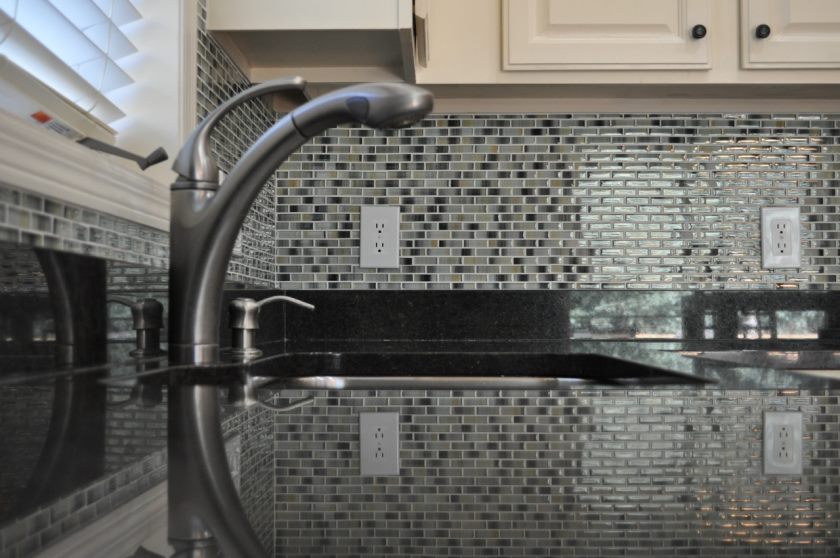
The working wall in the kitchen was tiled in Soviet times. To paint and plaster such a wall has no reason.
All of the above types can be laid on the surface by various methods. It largely determines the resulting decor. So, we note that the same products, stacked in different ways, will accordingly change the overall perception of design.
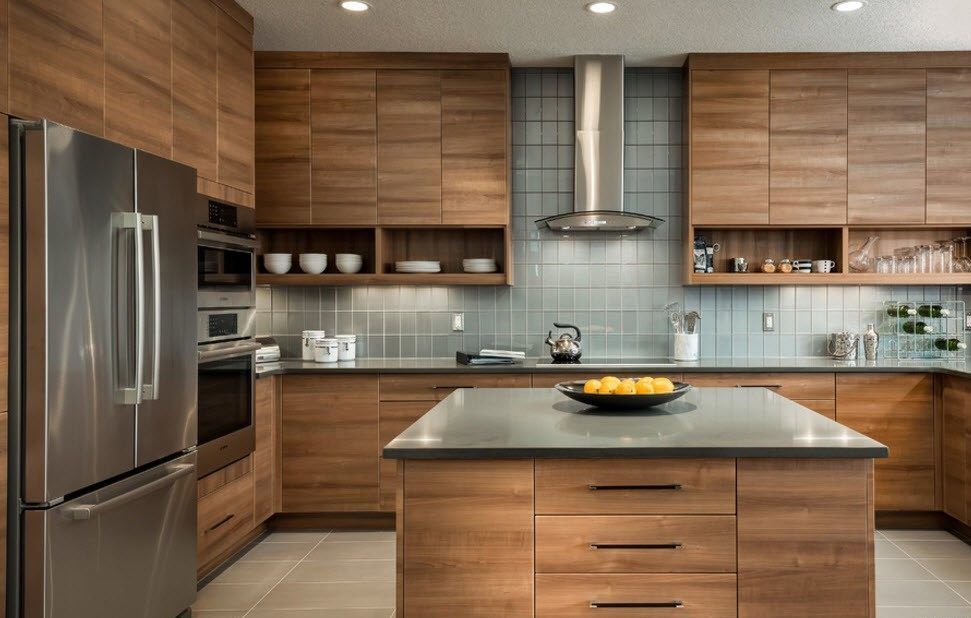
An apron is an ideal option for protection against household pollution.
Styling methods
We have identified 6 different styling technologies used by masters to create a modern design picture.

An essential advantage of such an apron is that it is easy to change without completely repairing the kitchen.
| Way | Description |
| Standard | Parts join the seam into the seam, the squares are laid as close as possible, then the seams are masked with grout. It is important to make the same distance between the squares and even seams. This method allows you to calculate the required number of squares based on their size dimensions of the apron. |
| Diagonal | More sophisticated technology, requires material trimming, marking and accurate calculations. During the operation of the grinder, you can damage both the base and yourself, so this type is trusted by professionals. |
| Offset | It implies a displacement of the seam relative to the previous one; such a technique requires a detailed study of the placement plan, fit, and accurate calculations. It will also be necessary to cut the tiles, which is difficult for a beginner. |
| Seamless | Suitable for granite and marble; the squares should have perfectly even cuts, in which case they can be positioned so close that they look like a single canvas. A rather painstaking scheme, not suitable for ceramics. |
| Herringbone | Rectangles fit 90 degrees to each other, forming a herringbone pattern. |
| Mosaic | To implement this technique, you can purchase a special mosaic tile, or lay out any of the types in such a way as to obtain a “mosaic” pattern. |

This design element will fit into any interior and give the kitchen a complete look.
Now you can choose the type of product necessary for the idea and the way it is stacked. You can proceed to the organization of the appearance.
Variations in appearance
We turn to this criterion in the last turn, since it is the final stage in the project. It is more important to choose the appropriate type of product for a particular surface and styling technique, depending on the skills and desires of the owner. Now let's talk about various design ideas.

When choosing a color, do not forget that it should correspond to the general mood of the room, the tone of the headset, floor, ceiling and other details.
Solid
The most simple and fairly common way of registration. You can lay out a kitchen apron in plain color, or combine plain squares of various colors. So you will be able to find unusual combinations and diversify the work area.

Take a look at both light and dark colors.
Despite the fact that this part of the room lends itself to the greatest pollution, white or beige will also be appropriate here. Having done a good grouting, and periodically conducting wet cleaning, the light decor will remain fresh and neat for a long time. Of course, dark tones are less easily soiled, and it will be easier to hide some of the flaws with them.
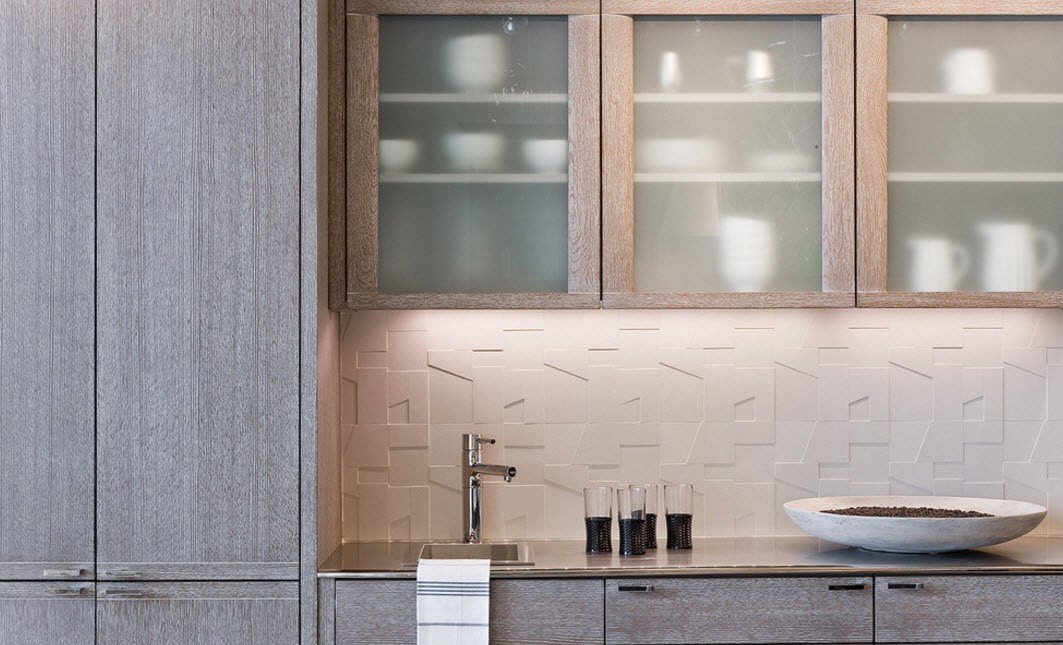
It is important to remember that at first the apron is laid out from the tile, and only then the kitchen set is mounted.
Advice! When choosing a plain tile for a kitchen apron, give preference to smooth types, embossed is more difficult to clean.
With patterns
You can diversify a monophonic look using squares with patterns. Alone, a type with patterns is rarely used, since an excessive number of lines makes the overall picture difficult to perceive, and can even spoil a perfectly matched headset.

Aprons in the kitchen can be made of completely different material.
Advice! Use a limited number of tile patterns.
Often this option is used to create a frame in combination with a plain one. It can also be fixed point, making bright accents. An interesting way of laying is when the individual lines, located end-to-end, form a single large pattern. This often produces unexpected, intricate decor ideas.
With image
Here we have a large assortment. With the help of a vivid image, you will be able to make the kitchen lively and energetic.For this room, berries, fruits, and flowers remain popular image themes. In addition to these images, you can apply any other drawing.

The main thing is that the drawing is suitable for the general style.
Recently, 3D images are gaining more and more popularity. This option is also relevant for a kitchen apron. He will make the room deeper bright and colorful. But, when applying the image, do not overdo it - the drawing should be appropriate and not burden the image.
Imitation of natural materials
You can choose granite or marble tiles. She looks great, and will give any room a noble atmosphere. But there is one drawback - the high price. If you are looking for a decent replacement, get ceramic or porcelain stoneware. But this does not mean that you have to sacrifice beauty.

At the moment, and these materials allow you to make an imitation of granite or marble.
A common method is to finish the apron with ceramic imitation of natural stone or brick. Such a design is suitable for loft style, minimalism, high-tech and other modern trends. A skilled craftsman and the right choice of styling will make your kitchen a model of the latest fashion trends.
What can be combined with
Tile is a great choice that can be freely combined with other materials. She gets along well with stone, glass and decorative plaster. Combining them, you will be able to create an interesting design of a kitchen apron with a certain theme and accent.

You can make combinations within a given area or throughout the kitchen.
So, choosing a tile with a bright image of grass for the apron, and plaster for the rest of the wall, you will get a wonderful embodiment of eco-style. The main thing to remember here is harmonious and correct combinations.
Care Rules
As already mentioned, this area is polluted the most. Therefore, requires careful care. The proposed material is easy to care for, but you should still remember a few important rules:
- Wipe the surface with a damp cloth every day;
- Once in 1-2 weeks, carry out a general cleaning, carefully removing dirt from the surface;
- When cleaning, use special tools, trying not to use abrasive compounds.

Remember that proper and regular maintenance will keep the design fresh longer.
So, we found out that tile is an excellent material for lining a kitchen apron. It is easy to care for and styling, has many design options and is able to give the kitchen both a noble and restrained look, and brightly colorful.
VIDEO: Apron for a kitchen from a tile.



